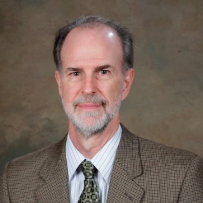Innovations in Membrane Treatment
By Jim Lozier

Next month I’ll be joining the Jacobs team at the Membrane Technology Conference (MTC) in West Palm Beach, Florida hosted by the American Membrane Technology Association (AMTA) and American Water Works Association (AWWA). It’s a major event to discuss the latest developments in membrane technologies for water and wastewater treatment. Membranes like ultrafiltration (UF), microfiltration (MF), nanofiltration (NF) and reverse osmosis (RO) are key to the water reuse and desalination solutions we develop to address water scarcity worldwide. Their ability to filter out bacteria, solids and other impurities means that they also play a key role in addressing water quality challenges, including emerging contaminants like PFAS.
I’ve spent my 40-plus year career focused on membrane treatment and every year there are innovations that make these advanced technologies more efficient, cost-effective and applicable to new challenges. One solution I’ll be discussing at MTC is the application of high-recovery desalination systems in a presentation evaluating ultra-high-pressure RO and osmotically-assisted RO. These two technologies were evaluated to maximize the recovery of a seawater desalination system for a resort island in the north Red Sea, where waste brine from the RO treatment process must be first stored and then barged off the island. Evaluation factors included maximum achievable recovery, feedwater quality and system space requirements, capital cost, energy usage and scale control. There’s growing interest in the potential of high-recovery desalination systems to maximize water production and reduce brine – as my colleague and co-author Constanze Simmermacher noted in a recent Q&A.
My Jacobs colleagues are also presenting on a whole series of topics at MTC this year, discussing everything from PFAS removal to applications in electric vehicle (EV) manufacturing. Here’s a summary of our other presentations:
- Jeff Beaty will be presenting on the design work we’re performing for a client in Canada to upgrade an existing lime softening water treatment facility with a dual membrane treatment process (UF/NF). Jeff’s presentation will explain how the design is leveraging the existing residuals treatment system to handle waste streams from both the UF and NF systems.
- Similarly on dual membrane treatment, Malik McClain will present the results of a pilot study we conducted for a client in Florida which examined the use of MF/UF and NF membranes with a biological aerated filter (BAF) pretreatment to treat high organic surface water.
- Mickal Witwer will present design information and operational data from a treatment facility using clarification, MF and RO membranes and polishing to reduce arsenic, mercury and PFAS in industrial wastewater.
- Scott Grieco will discuss the application of conventional and novel technologies for treatment of RO reject containing PFAS, based on the results of a bench-scale test comparing GAC, IX, Surface Active Foam Fractionation (SAFF®) and Fluoro-sorb®. This is a very timely topic given the uncertainty around wastewater and hazardous substances regulations for PFAS in the U.S.
- Also on PFAS, Joe Elarde will present on the upgrade of existing lime softening systems to NF while meeting PFAS regulations. Lime softening facilities face challenges related to higher operating costs and upgrading to NF can provide better treated water quality while lowering costs. In the same session, Raul Alfaro will discuss how several utilities in southeast Florida are addressing PFAS contamination in groundwater.
- Finally, Chandra Mysore will share insights into the water demands for EV manufacturing and associated treatment for high purity water and resulting wastewater generation.
View the MTC technical program for the full details of our presentations and we look forward to seeing you in West Palm Beach, March 4 – 7, 2024!
About the author

Jim Lozier is Jacobs’ Global Principal for Membrane Treatment and Desalination and has over 42 years of experience in the water treatment industry specializing in the application of membrane technologies for the treatment of ground, surface and industrial water, as well as for brackish and seawater desalination and for potable reuse. Jim pioneered the application of membrane filtration for reverse osmosis pretreatment for treatment of secondary effluent, which has been adapted across the globe for potable reuse. Jim has served in leadership positions with the American Membrane Technology Association and the American Water Works Association, as a technical committee member for the International Desalination Association World Congress and a past editorial board member for the journals Desalination and Desalination and Water Treatment.












































